




Milestones in developing the Bent Dipole driven Yagi-Uda
with bent DE Yagis gaining popularity for good reasons you might ask yourself who originally found the concept and who is who in that development?The official screenplay script

Dubus 1/2013 & Dubus Technik XII (late 2012)
The starting page of my article says it all. It was Brian Beezley, K6STI pioneering that basic concept with a small FM radio reception aerial. He brought that to commercial builds with Swedish VHF Teknik AB but stopped at this point. This is where I took on that idea with a modified form of bending the dipole with a straight center part and applied that to Long Yagis.
Note K6STI's input on the matter just below this introduction
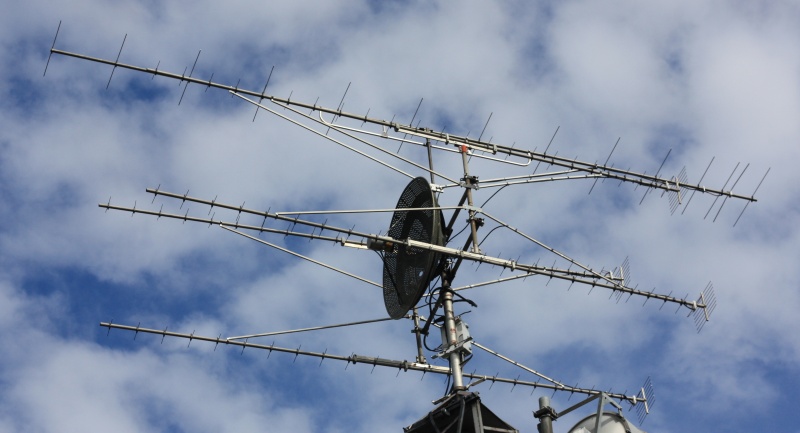
GTV 2-14 built by Radioclub Köszeg, HA1KYY for contest operation
Listing in order of appearance
• pre 2009 - K6STI's "Small Wideband Yagi"

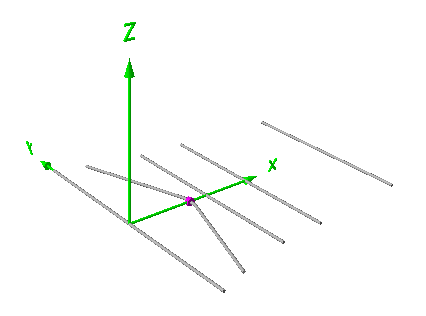
Brian Beezley, K6STI on how he derived this design:
"I don't know if I was the first to publish such a design, but I derived it directly from the Moxon two-element Yagi, the one whose DE and reflector have 90-degree bends near the tips. The purpose of the bends was to improve F/B over that of a conventional 2-el Yagi. Indeed they do that. I figured all the bends did was to increase the coupling between the two elements. Since the DE in my 88-108 Yagi needed to be split anyway for feeding, why not simply angle the element halves at that point toward the reflector to increase coupling? Much simpler than making four 90-deg bends in the elements. No tubing needed to be bent at all. It worked. The bent DE provides much better performance over 88-108 MHz than a conventional Yagi with straight elements.
The Moxon antenna was the key inspiration. I don't think my bent DE adds anything significant electrically. It's just easier to build."
• late 2009 to early 2011 - DG7YBN's initial 14 ele. bent DE Long Yagi design (GTV2-14), followed by 12 and 16 element design. The later went into the first issue of the VE7BQH 144 MHz G/T table for early 2011.
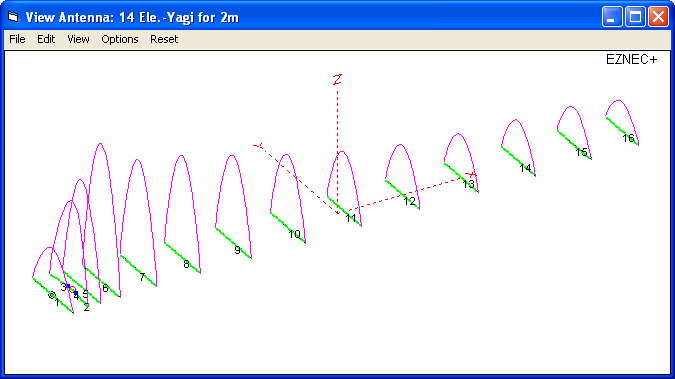

• Note the modified shape of the bent driven element with straight mid section
• late 2010 to early 2011 - G0KSC's initial OP-DES design - having shared design ideas about improving driver cells regularly we discussed bent drivers, reflectors and more then. The OP-DES is G0KSC's interpretation of a bent DE design.

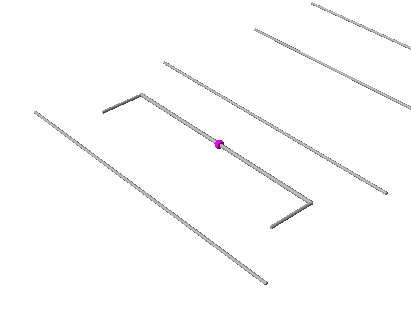
• late 2012 - DG7YBN publishes a set of Long Yagis with bent Driver in Dubus: "144/432 Mhz Long Yagis with a bent Driven Element" (see above)
• from August 2013 approx. - Breaking away from the dogma 'all you need is gain' DK7ZB designs first Low Noise Yagis
"As it has become more to focus on the noise figure than on the gain of Yagi-antennas I decided to develop some models with these fundamentals", website DK7ZB, http://dk7zb.darc.de/start1.htm

• The shape of bent Driver that DK7ZB uses is a direct copy of my modification to the K6STI initial version.
• The "DK7ZB 12" in the VE7BQH 144 MHz G/T table infact is a YU7EF EF0212B modified to bent DE.
• Sept. 2013 - What others say ...
• DK7ZB: In his paper for the 58th Weinheim convention paper DK7ZB attests my GTV 2-14 a "very clean current profile" and "an optimal supression of side lobes".
• Same time he states that I would have combined the K6STI dipole model "with the director chain of YU7EF". With is not the case. Does this Yagi of mine hold the characteristic current fold back around D2 or D3 that come with most 7EF designs? No, it does not. Whenever I move closer to the way of designing like my friend Popa I state this myself.
Source: Steyer, M. DK7ZB: Neue Langyagi-Konzepte für UKW, 58. UKW-Tagung Weinheim, 2013
• Sept. 2013 - DG7YBN's GTV 2-12n as a design for maximum G/T whatsoever.
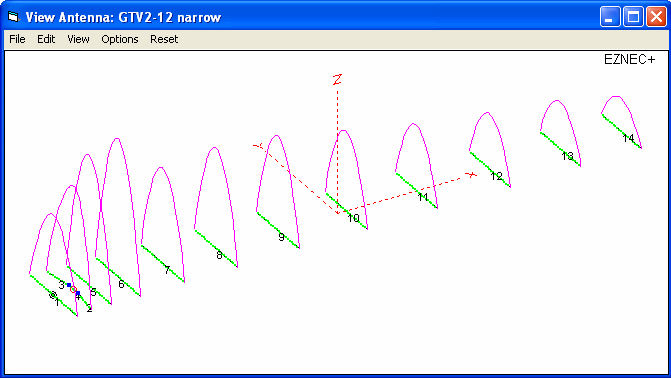
• A touch of the YU7EF way to drop current on D2 or D3 but strongly modified plus a narrow bandwidth help this matured bent Driver design to an outstanding G/T.
• I made this design as a reaction on the design studies of the YU7EF Yagis modified by DK7ZB. To point out that it is not sufficient to just cast a bent Driver into an existing design for top performance.
A clipping of the official 144 MHz G/T Table

• Oct. 2013 - What others say ...
• DK7ZB writes on his website: "The first who used a V-bending of the radiator was K6STI. A modified version with a stretched middle part and bent ends was made by DG7YBN. Meanwhile he has published several Yagis with the V-radiator [...]. Because the V-radiator is the best solution for raising the impedance of OWM-Yagis to 50 Ohm in my opinion I have made a lot of investigations on that type of a Yagi [...]."
Source: Steyer M., DK7ZB: 12,5-Ohm-OWL-Yagis, 28-Ohm-OWM-Yagis, 50-Ohm-V-Yagis, http://dk7zb.darc.de/start1.htm
• Aug. 2014 - What others say ... about matching to 50 ohms feedline inside the Yagi rather than per coax network
G0KSC writes on his website: "The time of requiring any form of matching in a Yagi has long past. Recent innovators such as K6STI, DG7YBN, UA9TC and RA3AQ (and G0KSC !) have adopted methods of altering the driven element shape in order to achieve a 50 ohm impedance and as a result, any quoted performance figures on their Yagis can be considered accurate and performance will be close to that predicted in software."
Source: Johnson, J., G0KSC: G0KSC High Performance Antennas, http://www.g0ksc.co.uk/
• Dec. 2014 - 2D bent dipole 'Blade DE' for UHF Yagi applications

Source: DG7YBN, Construction of a 432 MHz GTV 70-19m Blade Yagi, Dubus 4/2014
73, Hartmut, DG7YBN